The Tracking Line is a Means of Communication Between You and Your Dog—Not Just a Rope
Ed's Note: Gary Murray is a friend of mine. He is a retired Royal Canadian Mounted Police (RCMP) dog handler with 17 years of experience running tracking dogs for the RCMP. He currently owns and operates a kennel and training facility in Alberta. He sponsors tracking seminars for police and S.A.R. at his facility several times per year. If you are a K-9 handler or S.A.R. volunteer, I highly recommend Gary's seminars. You will come away from his seminars a better dog handler and trainer. —Ed Frawley
Most dog handlers think of their long line as a piece of equipment. But it is more than that.
I can't tell you how many times I have seen dog handlers snap their long line to their dogs harness and go along for the ride. They fail to realize that the line is a physical link between the dog and their hand. Other than the length of the line it is no different than rubbing your dogs ear while doing obedience.
The long line can be a very strong communication tool between the dog and handler. With proper use the communication flows back and forth all the time during the track. It uses a language that is only known by the dog and handler which both learn and grow with from the first training track. It is refined through out the years but all too often I see only the dog using it and the handler blindly following.
Let's start at the beginning and see if we can not develop a greater understanding of the long line, it's purpose and how to communicate with our dogs through it.
The first step is to choose the right line. Like all tools of the trade there are personal preferences. I have seen all types of lines used for tracking, rope, climbing rope, leather, and all types of webbing. They all have some good points and some bad. I personally stay away from any form of rope as it has a tendency to burn your hands as it slides through. Yet it is strong, easy to obtain and inexpensive. Leather is costly but has the most natural feel and spring to it. The down side is that when you buy a 20 foot line after a number of tracks you soon have a 30 foot line and as time wears on a 40 foot line which can break as the line pulls thinner and thinner.
The line used by most handlers these days is a webbing about 3/8" to 1/2" in width. It is strong, inexpensive and long lasting. Be sure to buy a quality webbing which is supple so it won't be too hard on your hands.
Line length is something there will always be a lot of discussion about. I have seen handlers track with lines from as short as 6 feet all the way up to 30 to 40 feet in length. Personally I feel that 20 feet is about the right length. This puts you far enough back to see your dog and read his body language. It also allows you when your dog indicates track loss to stop, circle the dog and be standing right on the corner. This should insure that the dog will relocate the track somewhere in the arch of the line and therefore you don't blow a corner. Another point for those of you who are doing criminal work the 20 feet gives you some distance if your dog tracks right up on a suspect and you need time and distance to react.
No matter what line you choose there will be numerous times when your dog comes in close to you and you pull in the slack. Just as you have the line down to 6 to 8 feet the dog hits the track, pulls hard into the harness and the line pulls through your hand causing friction burn. Occupational hazard I guess! Some handlers wear gloves while they are tracking. Personally I don't. I feel that bare hands listen a lot better to the line and what it is saying. As far as the friction burns go I feel that if I get one I deserve one. I should of been paying attention, getting off my butt and going with the dog if he has indicated the track. A number of friction burns can teach a handler a whole lot.
A handler's primary job in line work is to keep the line from distracting the dog. Keep it out of the dogs way and do not let it get tangled. All the time this little rope ballet is going on you must keep a steady tension on the line constantly.
This is where the communication through the line begins, at the constant tension. Any change in the tension, increased, or decreased is telling you something. This change in tension can be produced by the dog or the handler. No matter who changes the tension for what ever reason it should be telling the other something.
The proper tension on the line will keep it straight in the air from the dogs harness to your hand. I keep the line between my index finger and thumb letting the last foot or so fall down through my hand so I can grab it with the whole of my hand if I have to. This allows me to change the tension on the line from as little as a couple lbs. pressure(finger and thumb only) to pulling the dog to a complete stop(the whole hand).
Lets start from the middle and work up and down with the amount of tension on the line.
You are on the track, the dog is tracking well, and everything is going just fine. The tension on the line is enough to keep the line straight from the harness to your hand. At this point you know everything is O.K. and so does the dog. Any change in that tension and something is being said. Keep in mind that all this communication is in conjunction with you reading the dogs body language.
As you track along the dog starts to lift his head and move it from side to side as if looking for the track. The second he does this you start to increase tension on the line. This increase is a question to the dog. Are you on the track? If his head goes back to the ground and he increases tension back into the harness and the line he is saying "yeah I'm on track and here it is". The handler then eases off the tension until it is back to the point where everything is normal(straight line from harness to hand) If as you put tension on, the dog lifts his head, relieving tension you keep adding tension quickly but evenly until a point where you have the dog stopped and starting to turn into a circle at the end of the line. At this point your dog has given you a track loss signal and most likely a corner. As the dog swings through the arch of the long line you should be standing on the corner. Somewhere in the circle he now is searching he should hit the track.
When the dog hits the track he will give you a head turn that will show you where the track is going and then follow it with his body. This will increase the tension on the line. He is now saying to you through the line "here it is lets go" While training a new dog each and every time this happens your response would be "Good Boy" and the second you praise him you let the tension off the line and go with the dog. This conditions the dog how to communicate through the line back to you and as time goes on the dog will give stronger and stronger track relocations. It also gives him physical praise through the release of tension in the line.
In time this increase and decrease of tension through the line becomes a language between dog and handler. More can be said through that line than you could ever imagine.
So the basics in line communication are. Increase tension from the handlers. Are you on track? Increase tension from the dogs. I'm on track or here is the track. Decrease tension from the handlers. Good Boy I'm following you. Decrease tension from the dogs. I've lost the track and I'm looking.
Proper line work is more than just snapping the long line to the harness and following your dog on a track. So lets stop being dead weight on the end of the line for our dogs to drag around. Lets use our lines, ourselves and our dogs to the fullest, communicate he may be trying to tell you something!



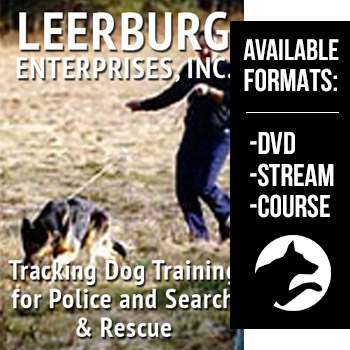
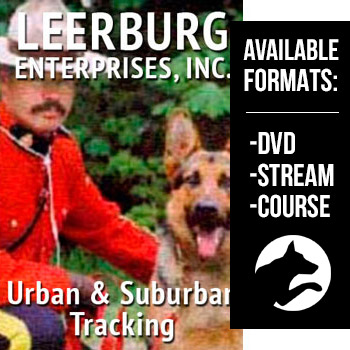
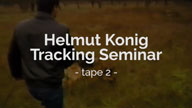
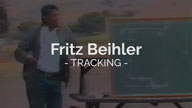
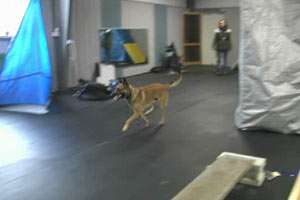
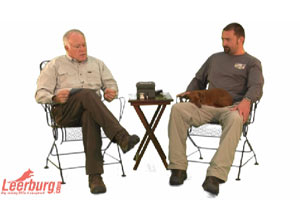
Ask Cindy.